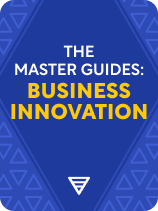

This article is an excerpt from the Shortform book guide to "The Master Guides: Business Innovation" by Shortform. Shortform has the world's best summaries and analyses of books you should be reading.
Like this article? Sign up for a free trial here.
What are the biggest innovation challenges? How are these issues undermining business projects?
Some experts have sought to explain why so many innovation projects fail by examining market mechanisms that work against innovators. Geoffrey Moore’s Crossing the Chasm and Clayton Christensen’s The Innovator’s Dilemma offer two such explanations.
Keep reading to learn about innovation challenges that arise while marketing to customers.
1. Failure to Thrive in the Mainstream Market
Moore primarily addresses one innovation challenge that would fail a small startup company that has already made some kind of technological breakthrough, and is looking to turn its breakthrough into a commercially viable product. He notes that this is hard to do because of the psychographics (the combination of psychology and demographics that determines customers’ purchasing behavior) of mainstream market customers.
Moore explains that as a new technology matures, different psychographic categories of customers adopt it at different stages of maturity and for different reasons. When you introduce an innovative technology, your first customers buy it either because they just love to try out new technology or they hope to gain a strategic advantage for their own business by adopting the technology early. These customers make up what Moore calls the “early market,” and they only represent about a sixth of the total market population.
The mainstream market (the other five-sixths of your potential customers) is made up of people who are more risk-averse. They prefer to buy products only from companies who’ve established their credibility as market leaders. They typically won’t buy a new product until they see other people using it and benefiting from it. And they generally don’t count your early-market customers as credible reviewers—they want to see other mainstream customers vouching for it before they buy. So mainstream customers won’t buy your product until other mainstream customers have already bought it and found it useful.
Moore calls this catch-22 the “chasm” between the early market and the mainstream market. Many innovative products enjoy brief success in the early market, but once the early market is saturated, sales stagnate or drop off. They end up failing because they can’t get past the chasm and break into the mainstream market.
Getting Past the Chasm
How can you get an innovative product past the chasm and into the mainstream market? Moore’s strategy consists of focusing your effort on becoming the market leader in a very specific niche of the mainstream market. You do this by rolling out a version of your product that’s exquisitely tailored to the needs of that particular niche.
This works because a small but enthusiastic market can amplify your marketing. Word of mouth spreads quickly through a niche market: If just a few customers are impressed with your product, everyone will hear about it (whereas in a large market, their voices can get lost in the crowd). This makes it possible to build a reputation for your product and start attracting other mainstream customers: When the niche market saturates, you’ve established your credibility and you can roll out other versions to appeal to other niches. In this way, you can take over the mainstream market one sector at a time.
2. Failure to Seek New Customers
While Moore aims his advice at small startups (though his strategy for crossing the chasm is applicable to any company introducing an innovative product), Christensen primarily addresses established companies.
He observes that large companies often struggle with the innovation challenge of developing new products, especially disruptive innovations, despite the fact that they have more resources than startups do. He argues that this is because established companies, operating in large markets and needing large volumes of sales to survive, generally focus on pleasing their existing customers. They don’t seek out alternative customers and smaller markets because these groups are initially too small to provide the volume of sales they need. But disruptive innovations almost always start out in small markets, appealing to different customers than tried-and-true products do. Thus larger companies, which aren’t incentivized to pursue small markets, end up missing or ignoring opportunities that smaller companies more readily pick up on.
Christensen’s observations corroborate Moore’s, since both an early market and a niche mainstream market are small. And the fact that existing customers Christensen describes are rarely interested in disruptive innovations reflects the same risk-averse mentality in mainstream customers that Moore discusses.
Christensen also notes another reason established companies struggle with innovation: In most cases, producing a disruptive innovation requires a complete set of production tools and a new network of suppliers and distributors. This comes naturally to a startup, but it’s hard for an established company to justify the cost of retooling its production lines and overhauling its network of suppliers.
Resolving the Dilemma
Given the obstacles to innovation that large companies face, Christensen recommends that you manage every innovation project as a small startup, even if it’s wholly owned by a large company. You can do this either by creating a spin-off organization within the company or by acquiring an existing startup.
Either way, Christensen stresses that the new organization must have adequate autonomy to explore and develop disruptive innovations. It will struggle if it has to compete for resources with the company’s other projects, including those focused on sustaining innovations. It may also need to develop supply chains and operating procedures that are incompatible with those of the parent company.
Christensen also stresses the importance of budgeting for multiple attempts at marketing the disruptive innovation. You may have to explore several different applications or niche markets before you find one where the product takes off. This is because disruptive innovations create new markets, and markets that don’t exist yet are impossible to accurately forecast.

———End of Preview———
Like what you just read? Read the rest of the world's best book summary and analysis of Shortform's "The Master Guides: Business Innovation" at Shortform.
Here's what you'll find in our full The Master Guides: Business Innovation summary:
- The reason why most innovations never lead to growth or profits
- Key principles for implementing innovative ideas that deliver value
- Advice from seven leading experts on overcoming innovation challenges






